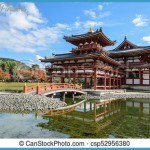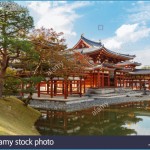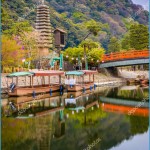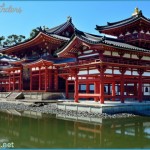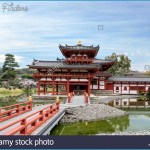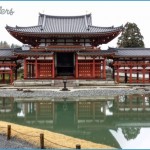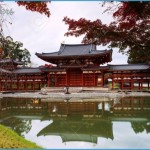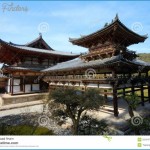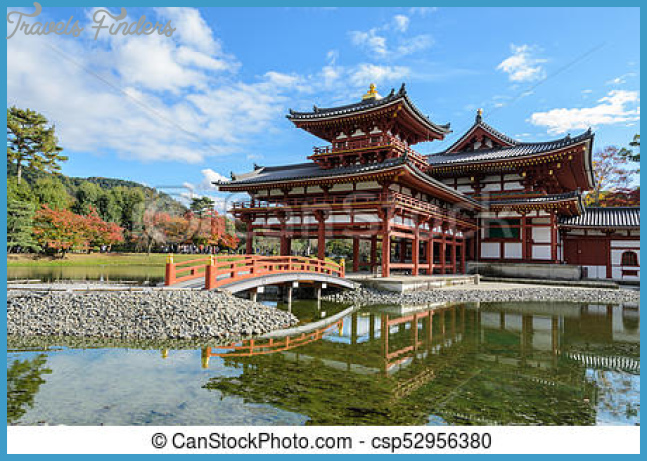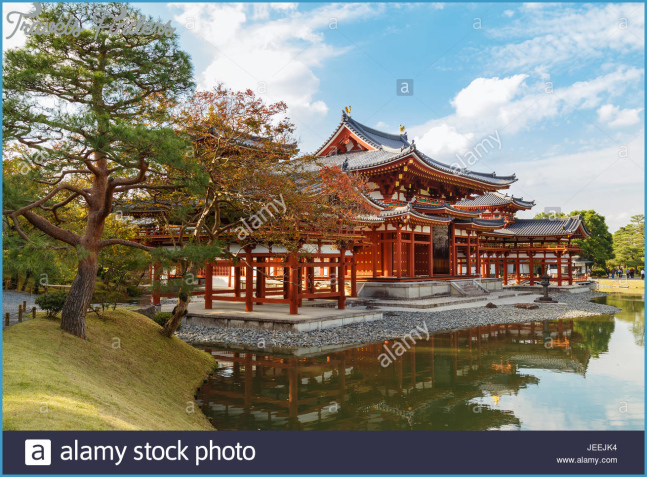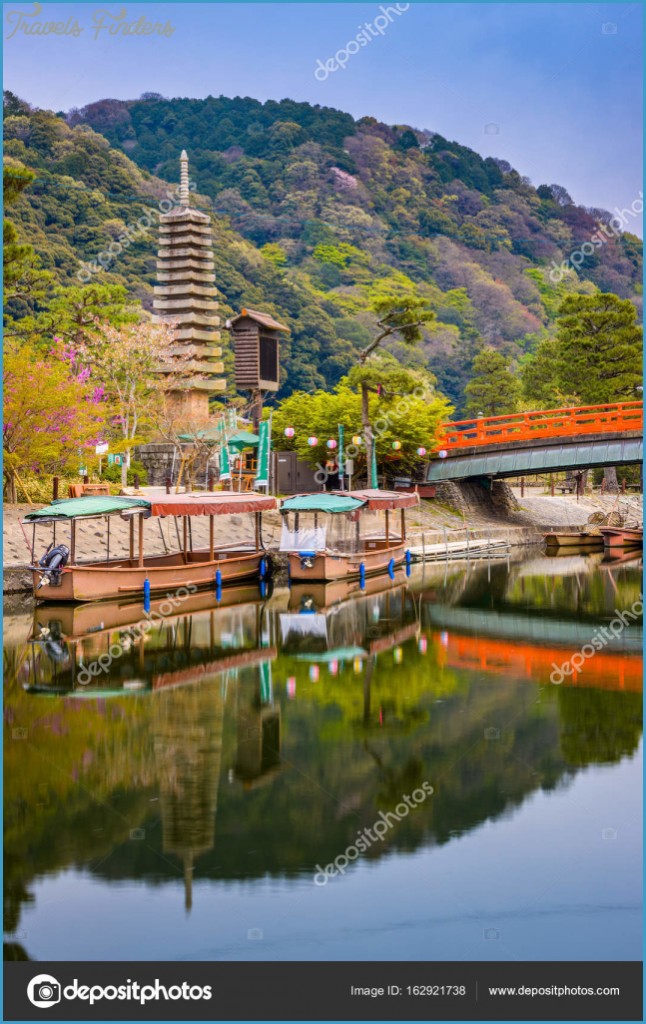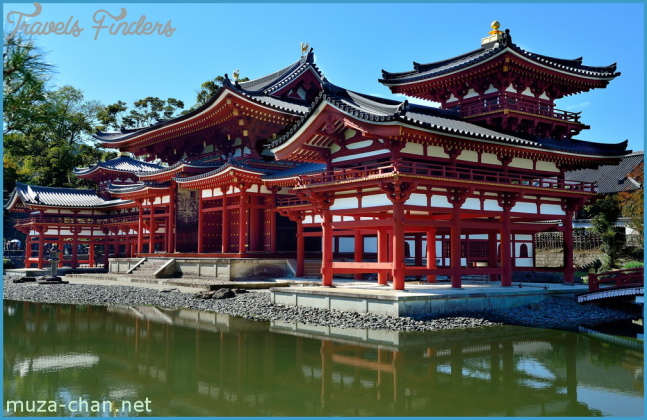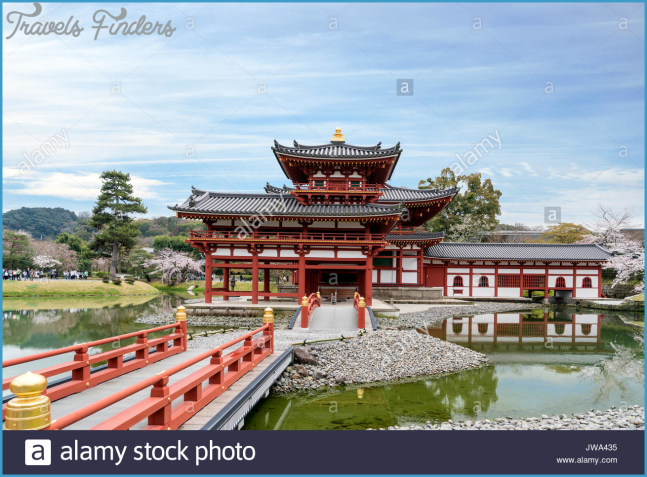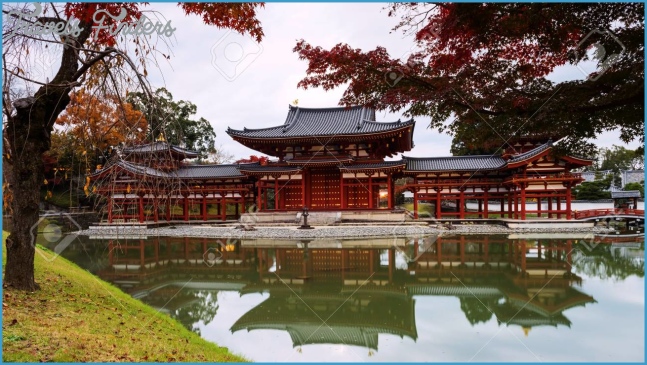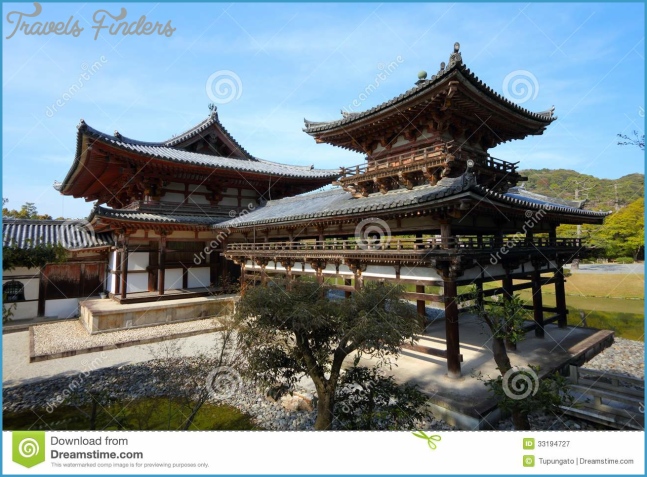Historic Uji is located south of Kyoto on the Uji River, which flows in a torrent from Lake Biwa. Known for its fine tea cultivation since the 14th century, Uji ocha can be sampled at the riverside Taihoan, the Uji City Municipal Tea Ceremony House. Demonstrations of traditional cormorant fishing are held by firelight along the river on summer evenings. Across the river to the north is Ujigami-jinja, a World Heritage Site that is the oldest extant Shinto shrine in Japan, and close by is the Tale of Genji Museum. Written in the early 11th century and considered the world’s first novel, the final ten chapters of noblewoman Murasaki Shikibu’s The Tale of Genji were set in Uji.
Uji in Kyoto Photo Gallery
Near the Uji River’s southern bank lies another World Heritage Site, Byodo-in, perhaps the ultimate in refined architectural design and spiritual expression. The 11th-century temple’s Phoenix Hall, with its lone Amida Buddha and corridor wings, seems a floating celestial dream reflected in the liquid mirror of the garden pond. Recently restored, Byodo-in’s fresh lacquer will age for decades, growing ever more beautiful with the patina of time and the elements, as will the pair of shiny gold phoenix ornaments atop the roof of perfect new kawara clay tiles. Displayed in the temple’s Hoshokan Museum amidst other priceless treasures, the original phoenix sculptures, with their ancient patched repairs, are heart- breakingly beautiful.
A statue of noblewoman Murasaki Shikibu, author of The Tale of Genji, who is considered to
be the world’s first novelist.
The Phoenix Hall at Byodo-in Temple, built in 1053, is an architectural embodiment of
celestial enlightenment.
A demonstration of traditional ugai cormorant fishing in a channel of the Ujigawa River.
The Haiden at Ujigami Shrine is the oldest Shinto worship hall in Japan.
The Tale of Genji Museum celebrates the namesake 11th-century novel, especially the
chapters set in ancient Uji.
Charming tea hosts at Taihoan, a municipal teahouse that serves famous Uji ocha.
A pilgrim monk at Mimuroto-ji Temple.
Azaleas add color to the karesansui dry landscape garden at Mimurodo-ji.

